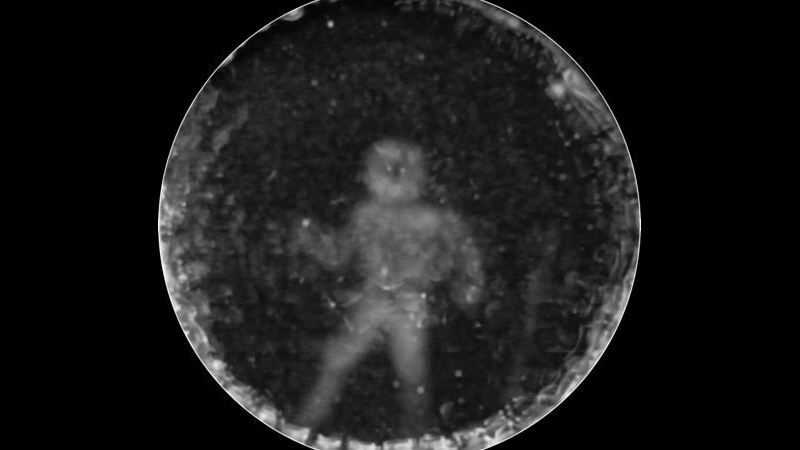
When Albert Einstein famously declared “reality is merely an illusion,” what he really implying was that reality as we see it is relative to its observer. For humans, it’s dominated by the colors of the visual light spectrums. For dogs, it’s painted in olfactory streaks of scent. Dolphins and other cetaceans use echolocation to “see” with sounds. We cannot empathize with these forms of reality because they are so inconceivably different from what our senses allow us to perceive and imagine. But now, in a world’s first, a slew of dolphin researchers from the US and UK have created a visual representation of how a dolphin’s echolocation conceives a submerged human.
The resulting image was created using a device known as a CymaScope, that’s capable of fabricating the visual representation of sound and vibration. Developed by John Stuart Reid, the CymaScope enables scientists to isolate and record dolphin echolocation sound waves directed and reflected off of specific objects, and then transform this data into 2D images. Later, computer software converts these images in 3D, which the researchers then printed.
Jack Kassewitz, the research team leader and founder of SpeakDolphin.com, stated that “We’ve been working on dolphin communication for more than a decade. When we discovered that dolphins not exposed to the echolocation experiment could identify objects from recorded dolphin sounds with 92% accuracy, we began to look for a way for to see what was in those sounds.”
The CymaScope functions by capturing the modulated echoes that bounce off of objects hit with the sonar beams of the dolphin’s echolocation and imprinting sonic vibrations on the surface of ultra pure water. Since water has a high flexibility and fast response to the imposed vibrations, it is able to translate many of the sinusoidal periodicities into a physical sinusoidal structure that’s visible on the surface as well as beneath it. By applying a light source off-axis above the water’s surface, it becomes possible to capture the 3D geometrical data with a digital camera in a way that’s visible to human eye.
Using this technique, a female dolphin named Amaya was directed to aim her sonar bursts at a submerged diver who held his breath to avoid creating bubbles while using a hydrophone to record the rebounding echoes, which were then transformed into a 2D image of his silhoutte. Next Kassewitz contracted 3D Systems to transform the 2D imagines into a 3D-printed imagine highlighting the Cymascopic details.
“We were thrilled by the first successful print of a cube by the brilliant team at 3D Systems,” said Kassewitz. “But seeing the 3D print of a human being left us all speechless. For the first time ever, we may be holding in our hands a glimpse into what cetaceans see with sound. Nearly every experiment is bringing us more images with more detail.”
The team’s next goal is to identify how dolphins share these echolocation images as part of a sound-based image language.
Source: SpeakDolphin, Cymascope, Gizmodo
Advertisement
Learn more about Electronic Products Magazine





